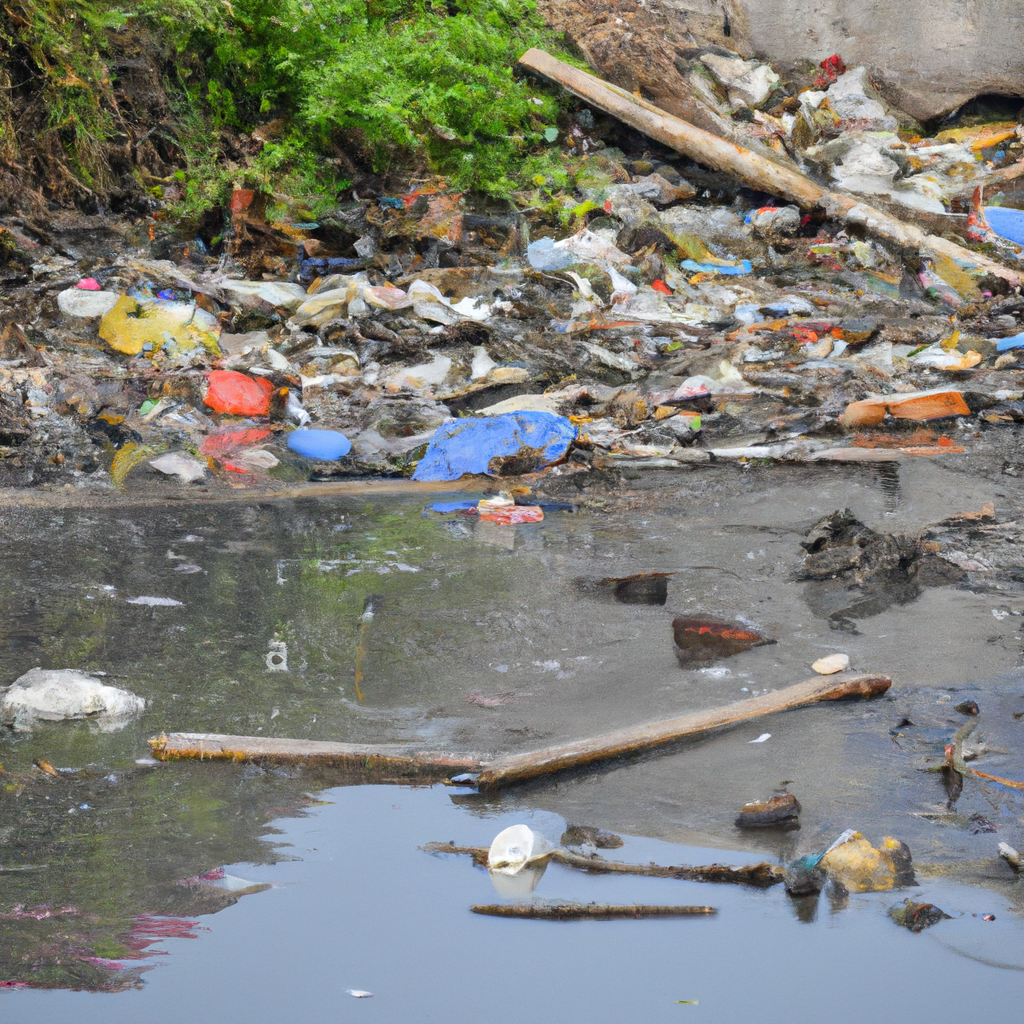Pollution in Environment
Posted By: Alice

Air Contamination
Air contamination is a topic that has been in the news lately, as the effects of pollution are becoming increasingly evident in the environment. The air we breathe is filled with pollutants that can have a profound effect on our health and the environment.
Air pollution is caused by emissions from automobiles, factories, and power plants. These emissions are made up of pollutants like sulfur dioxide, nitrogen oxides, carbon monoxide, lead and other hazardous substances. These pollutants are released into the atmosphere and disperse in the air, contributing to air contamination.
The effects of air contamination can be both short-term and long-term. Short-term effects include coughing, wheezing, shortness of breath, and eye irritation. Long-term effects include an increased risk of cardiovascular and respiratory diseases, such as asthma and lung cancer. The risk from these diseases increases with the level of air contamination.
In addition to being harmful to human health, air contamination can also have an adverse impact on the environment. It can cause acid rain, smog, and ground-level ozone levels which are linked to harmful effects on vegetation. Air contamination also contributes to global warming, as pollutants like carbon dioxide trap heat in the atmosphere.
There are a number of measures that can be taken to reduce air contamination. Governments can impose regulations on industries, restricting the emissions of pollutants. In addition, individuals can also make a difference by choosing to use public transportation, reduce energy consumption at home, and proper car maintenance to reduce exhaust emissions.
Air contamination is a growing problem and one that requires attention. It is essential that we take steps to reduce its impacts on our health and the environment. We must be mindful of the air we breathe and take the necessary steps to make sure that the air remains clean and safe. The only way we can accomplish that is by working together and taking a stand against air contamination.
Water Contamination
The worldâs waters are put in a delicate balance between manmade pollutants and naturally occurring characteristics, such as salinity and pH levels. However, when manmade pollutants enter the water, they can cause permanent changes to the environment, leading to water contamination. It is important to be aware of how our actions are impacting the planet, and what we can do to help mitigate water contamination.
Water contamination is a serious environmental issue, caused by a variety of sources, including industrial activities and agricultural runoff. Oil spills, sewage, chemicals, and agricultural runoff are the most common sources of water pollution, and these pollutants can be exceedingly difficult to remove from the water. Polluted water can cause a number of health concerns and can be difficult to remediate or contain.
One of the most influential sources of water contamination is industrial activity, as factories and power plants are frequently responsible for releasing toxic chemicals into the environment. The chemicals in these discharges can alter the natural pH balance of the water, making it difficult for organisms to survive, and polluting the drinking water supplies in the process. Pollution from industrial activities is the largest source of water contamination, affecting more than one-third of the worldâs water supplies.
Agricultural runoff is another major source of water contamination. When fertilizers and other chemicals are introduced into the water, they can alter the oxygen balance, creating an environment unsuitable for many species of fish and other organisms. Additionally, runoff can cause eutrophication, a process where an abundance of nitrogen and phosphorus pollutes a body of water, reducing its oxygen and suffocating its species.
It is important to take action to protect our water supplies from pollution and contamination. To do this, governments and businesses should establish policies to reduce water pollution. This could include establishing water pollution regulations, such as limits on the amount of chemicals that can be released into the environment. Additionally, using pollution-control technologies, such as wastewater treatment plants, can help reduce the amount of pollutants released into the environment. These technologies can be costly, but can prevent water contamination and decrease the risk of environmental harm.
We also need to consider how we use our water supplies. Consumers can help reduce water contamination by conserving water when showering, washing dishes, and watering plants. Additionally, planting greenery around waterways can help absorb pollutants and reduce the risk of contamination.
Water contamination is a serious environmental issue, but it can be mitigated with the right policies and by taking action to protect our water supplies. Taking the time to understand the sources and causes of water contamination, and implementing the necessary measures to reduce water pollution, can help ensure that our water supplies are safe and healthy for many generations to come.


